BOND 50 MOONRAKER
Week 11 of our marathon James Bond retrospective
2012 marks the 50th anniversary of James Bond on the big screen. To celebrate, SFX's Nick Setchfield revisits each and every 007 adventure in a week by week countdown to Skyfall ...
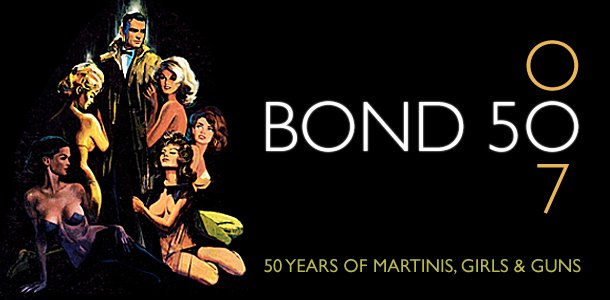
MISSION 11: MOONRAKER (1979)
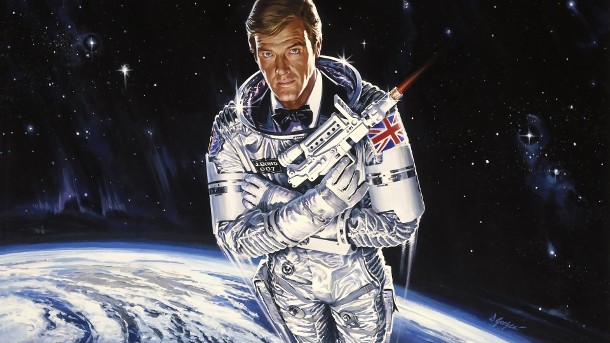
WHERE NO BOND HAS GONE BEFORE In ‘77 the closing moments of The Spy Who Loved Me vowed “James Bond will return in For Your Eyes Only ”. And then a phenomenon named Star Wars smashed into pop-culture, shaking the traditional certainties of Bond’s universe. Colonising the minds of Force-struck kids everywhere, the globe-quaking success of George Lucas’ tech-laden swashbuckler established a blockbuster arms race in late ‘70s cinema. As studios scrambled to profit from the SF surge – Close Encounters Of The Third Kind and Superman The Movie arrived in its slipstream, with Star Trek The Motion Picture and Alien readying for launch – Broccoli jettisoned Eyes in favour of another unfilmed Fleming title, the suitably spacey-sounding Moonraker. The fantasy boom’s influence is alternately winking and blatant here: an entry-coder in a secret lab is keyed with John Williams’ five-note CE3K theme while a silhouetted girl in the title sequence soars like a Kryptonian in red and blue; elsewhere Bond saves the day by “switching to manual” (you can almost hear a disembodied Alec Guinness whisper “Use the Force, James!”). For diehards the decision to propel Fleming’s hero into orbit may feel a fad-jump too far – and yes, there’s something jarring about hearing the zap of laser weapons in a Bond film - but it’s as utterly, unshakably of its time as the disco mix of Shirley Bassey’s keening title song that accompanies the end credits. As the poster had it, “Outer space now belongs to 007” – a clear declaration of territorial intent to the Lucas empire.
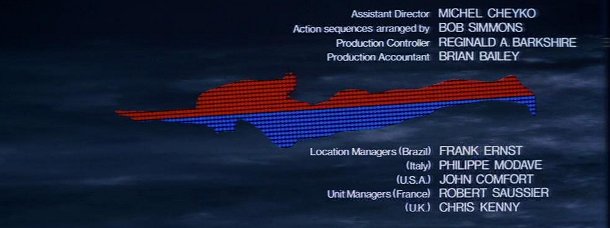
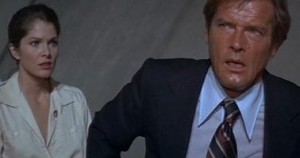
THE MOORE BOND’S THE MERRIER? “People go to laugh at Bond films,” insisted director Lewis Gilbert, unapologetically. And Moonraker ’s popular perception remains a smirk-fuelled distillation of all that’s deemed ludicrous and clowny about the Roger Moore era, Fleming’s tortured government assassin remade as a safari-suited cheese strolling merrily between sight-gags and slapstick setpieces, an unstoppable gatling-gun of double-entendres. But is that fair? There’s actually considerably more to Moonraker than double-taking comedy pigeons and candy-striped hover-gondolas (yes, officially the moment it all goes too far). Take the scene where Bond staggers from a whirl in the rigged centrifuge machine. He emerges sweat-slick, visibly shaken, stripped of his quips, his eternally arched (and arch) eyebrow finally quelled. He falls, but is too proud to let Holly help him. He exits in silence, half-broken, momentarily closer to the Fleming conception than Connery ever came. Elsewhere Corinne’s pursuit by Drax’s hounds is the grimmest, most nightmarish sequence in all the Bonds: as slants of daylight cut like knives through a tangle of trees a pack of flesh-hungry dogs race a terrified girl to her death, accompanied by a John Barry score that sounds like some beautiful, regretful lament. As the dogs fall on Corinne we cut to the bells of Venice. It’s as if the film itself wants to outrun the dark realities of Bond’s world. Once again, no one’s laughing.
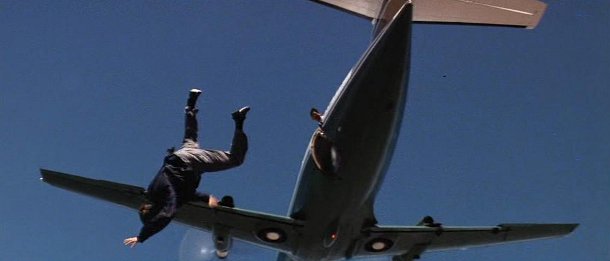
SKY FALL The audacious ski-leap that launched The Spy Who Loved Me set a whole new standard in grandstanding opening setpieces. Moonraker competes with an equally vertiginous pre-titles gag: Bond is pushed out of an aeroplane and, armed only with blazer, slacks and his wits, engages in a fearless freefall tussle for a parachute, high above fast-approaching ground. It misses the brilliant, iconic kick of Spy ’s Union Jack punchline – though Moore, amusingly, appears to be manoeuvering through the air by the cunningly applied power of flares at one point – but it’s an impressive, intrepid piece of stunt-craft that took no less than 88 separate skydives to accomplish. The filmmakers faced some crucial practical challenges: could parachutes be made small enough to fit beneath the stunt performers’ clothes? And would a Panavision camera prove too heavy for aerial photography? Skydiving specialist BJ Worth developed a parachute pack that was an astounding 25mm thick and, quite by chance, the crew found an old, experimental Panavision camera (fitted with a plastic lens, not a glass one) in a Paris pawn shop. Stuntman Jake Lombard assumes the role of 007 in the scene and while his doubling may be a little too conspicuous at times it’s an acceptable trade for one of the most genuinely courageous stunts in the Bond canon.
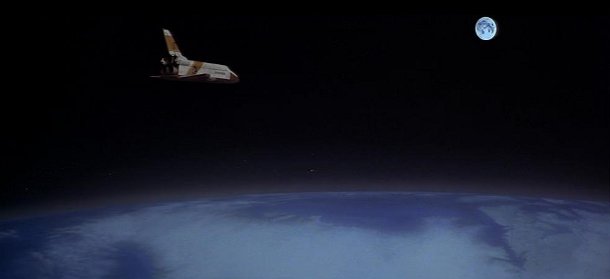
THE FINAL FRONTIER Key to the sci-fi-spiced iconography of Moonraker is the space shuttle. In the real world it wouldn’t launch until 1981, but NASA’s creation was already embedded in the public consciousness as the future of space travel and its inclusion gives this Bond adventure a cool, topical gleam. While the end credits slyly declared “And on location – in outer space!” it was veteran British modelmaker Derek Meddings who hurled 007 starwards (Broccoli had approached the big American FX houses and while he was wowed by their technical acumen he had baulked at their call for a stake in the film’s profits). Meddings approached the task with characteristic ingenuity: magnesium flares simulated launch-fire while cascades of salt doubled for the contrails of the shuttle in flight. Elsewhere the climactic destruction of Drax’s space station was accomplished with the timely creative input of twelve-bore shotguns. Meddings’ methods may have been far from the bleeding edge of Industrial Light and Magic but the results remain startling, from the shuttle’s stately escape from Earth’s blue grip to the heart-stopping moment Drax’s orbital lair emerges from darkness, ominous and insectile in the firmament. Teamed with Barry’s most majestic score it truly feels like a thrilling new frontier for Bond.
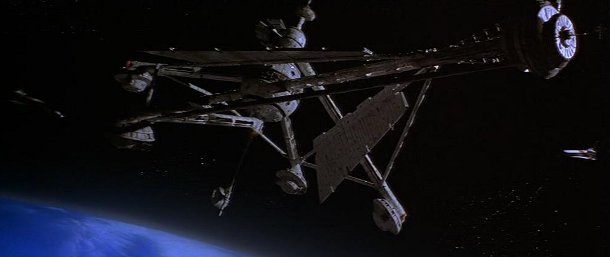
TRIV AND LET DIE:
Sign up to the SFX Newsletter
Get sneak previews, exclusive competitions and details of special events each month!

The Bondmakers originally hoped to film aboard a genuine NASA shuttle launch.

The fight between Bond and Chang in the glass factory was a revised version of a scene cut from The Spy Who Loved Me , where Bond brawled in a museum of Egyptian antiquities.
JAMES BOND WILL RETURN IN FOR YOUR EYES ONLY

Nick Setchfield is the Editor-at-Large for SFX Magazine, writing features, reviews, interviews, and more for the monthly issues. However, he is also a freelance journalist and author with Titan Books. His original novels are called The War in the Dark, and The Spider Dance. He's also written a book on James Bond called Mission Statements.


